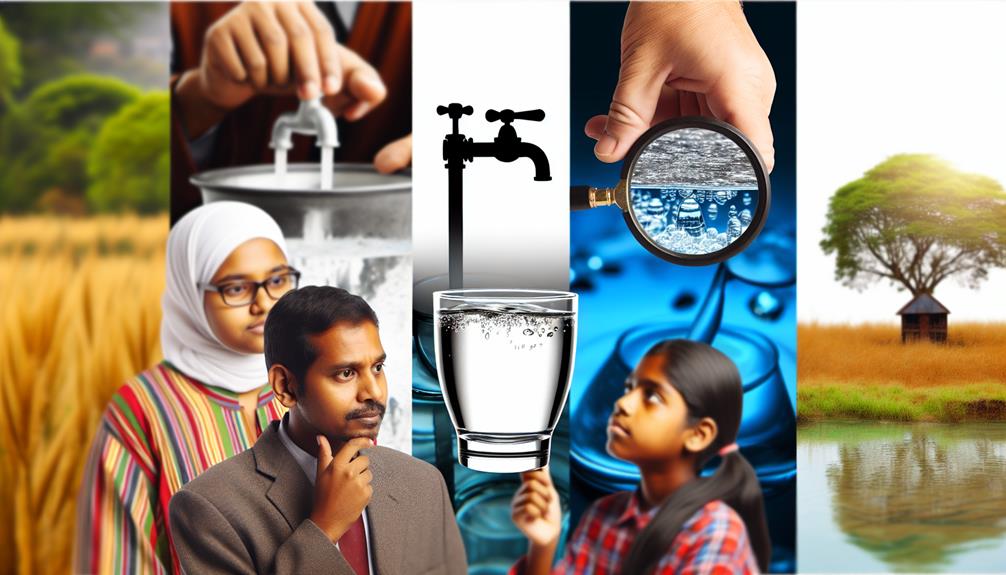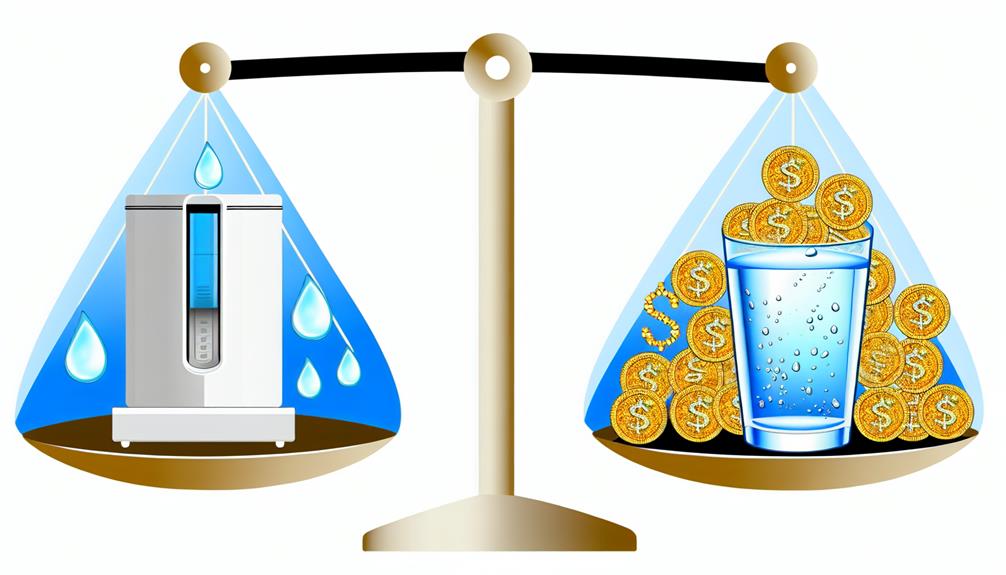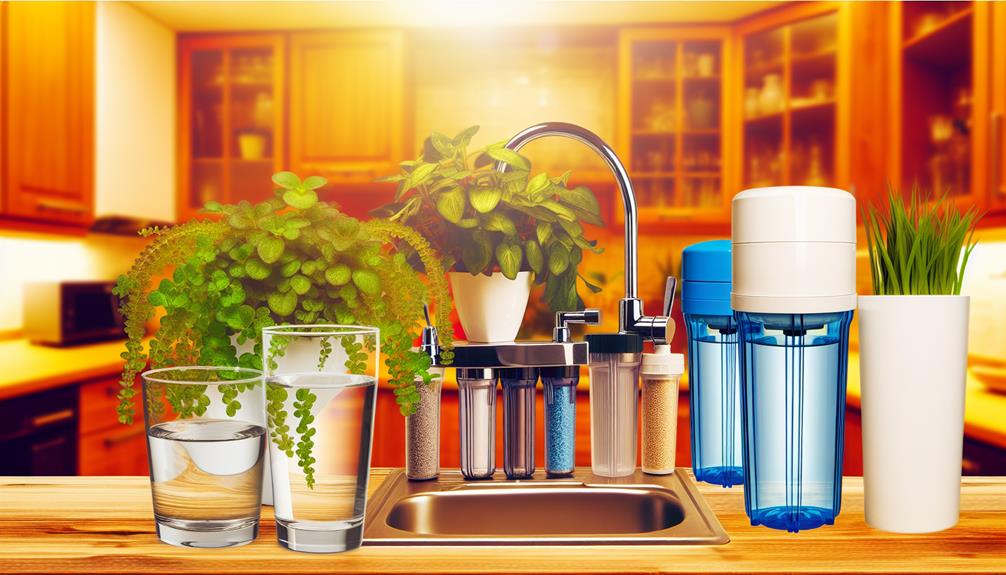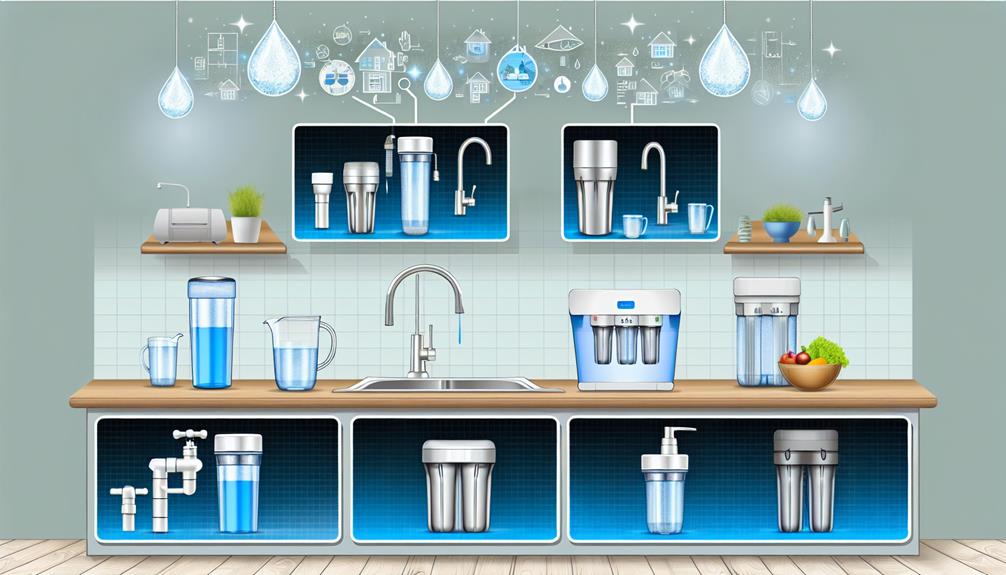Water is the elixir of life, yet its purity can be the poison that undermines your health; choosing the right water purifier is a balance of paradoxes.
You're navigating a market flooded with options, each claiming to be the ultimate guardian of your wellbeing. Consider the water quality in your area: do you battle hard minerals or fight invisible bacteria? The type of filtration system—whether it's reverse osmosis, UV, or activated carbon—can make or break its effectiveness against specific contaminants.
You'll want to ponder the purifier's capacity—does it meet the thirst of your household or office? Maintenance demands can't be ignored either; you're looking for a long-term relationship, not a high-maintenance fling.
As you weigh up the costs against the benefits, remember that the cheapest option isn't always the wisest. Stick with us, and you'll uncover the critical elements that will guide you to a decision as clear as the water you seek.
Assessing Water Quality Needs

Before selecting a water purifier, you must first evaluate your specific water quality needs based on the contaminants present in your water supply. It's not just about taste improvement; it's crucial to understand the variety of potential water contaminants that could compromise your health. These contaminants range from physical and chemical to biological and radiological elements that can be harmful if not adequately addressed.
You'll want to conduct a comprehensive water analysis to determine the presence of common contaminants such as heavy metals, including lead and mercury, as well as chlorine, nitrates, and organic compounds. This assessment will inform your decision, guiding you to a water purifier that targets the specific impurities found in your analysis.
Furthermore, considering the taste improvement of your water is a practical approach to ensuring daily consumption is both safe and enjoyable. A purifier equipped with activated carbon filters can be particularly effective in removing taste and odor-affecting compounds, while also addressing chlorine and certain pesticides.
In this technical evaluation, don't overlook the byproducts of industrial processes and agricultural activities, which may also be lurking in your water. A detailed analysis, therefore, becomes indispensable for selecting a purifier that ensures your water isn't only palatable but also free from a wide array of hazardous contaminants.
Understanding Filtration Types
Delving into the realm of water purification, it's essential to recognize the various filtration types available, each designed to target specific contaminants and impurities in your water supply. The choice of filter material is critical as it determines the efficacy of contaminant reduction. Here's an overview:
| Filtration Type | Contaminant Reduction |
|---|---|
| Activated Carbon | Chlorine, VOCs, odors |
| Reverse Osmosis | Salts, metals, fluoride |
| Ion Exchange | Hardness, heavy metals |
| Ultraviolet | Bacteria, viruses |
Activated carbon filters are adept at removing organic compounds, such as volatile organic compounds (VOCs), as well as chlorine and odors, making them a popular choice for improving taste and smell.
Reverse osmosis systems offer a more thorough purification process, capable of eliminating a broad spectrum of contaminants, including dissolved salts, lead, and fluoride. However, they require periodic replacement of their semipermeable membrane.
Ion exchange units specialize in softening water by targeting calcium and magnesium ions, which contribute to hardness, and can also remove heavy metals like lead.
Lastly, ultraviolet filters use UV light to effectively neutralize bacteria and viruses, offering an additional layer of protection without chemical treatment. Each filtration method's performance is contingent on the quality and condition of the filter material, which necessitates regular maintenance to sustain optimal contaminant reduction.
Evaluating Purifier Capacity

When selecting a water purifier, it's crucial to consider the unit's capacity to ensure it meets your daily water consumption needs efficiently. Capacity isn't merely about the volume of water a purifier can process, but also about how this aligns with your household's demand.
You must analyze the flow rate—the speed at which purified water is delivered. This rate is often measured in gallons per minute (GPM) or liters per minute (LPM), and it dictates how readily available purified water will be once you turn on the tap.
Moreover, purifier placement plays a significant role in capacity evaluation. Under-sink models may offer higher flow rates compared to countertop versions, while whole-house systems must be capable of handling the water demands of multiple outlets simultaneously.
Therefore, assess the intended purifier placement in conjunction with the flow rate to ensure a match between the system's output capabilities and your anticipated usage.
Comparing Maintenance Requirements
Aside from assessing capacity, it's equally important to compare the maintenance requirements of various water purifiers to ensure they align with your willingness and ability to perform upkeep tasks.
The frequency of filter changes is a critical factor that impacts both the performance and the long-term cost-efficiency of your system. Manufacturers typically specify the lifespan of each filter type in gallons processed or time used, which can range from a few months to several years. Calculating the average consumption for your household allows you to anticipate the regularity and cost of replacement cycles.
Moreover, the intricacies of filter replacement protocols vary among models. Some systems facilitate user-friendly, DIY troubleshooting and filter change procedures, which can save you the expense and inconvenience of professional servicing. Conversely, intricate systems may require specialized tools or technical expertise. Therefore, you must weigh the pros and cons of potentially complex maintenance against the purifier's filtration efficacy.
A thorough analysis of these factors will enable you to discern which purifier offers a balance between high-quality water output and manageable maintenance that suits your lifestyle.
Analyzing Cost and Value

Evaluating the cost-effectiveness of water purifiers involves analyzing both the initial investment and the ongoing expenses associated with operation and maintenance. You'll want to examine the unit price, which can vary significantly depending on factors like technology used, capacity, and brand reputation. However, the true value extends beyond the sticker price. Consider installation ease, which can impact your upfront costs. A system that's straightforward to install might save you on professional installation fees.
Ongoing costs are equally crucial to your analysis. Calculate the cost of replacement filters, energy consumption, and any additional maintenance requirements. These recurring expenses can accumulate over time, sometimes exceeding the initial cost of the purifier itself.
Factor in the brand reputation as well. A reputable brand may offer better customer service, warranty terms, and reliability, potentially reducing long-term costs associated with repairs and replacements. Don't be swayed by a low purchase price without considering these elements.
Ultimately, the best value is a balance between a reasonable initial investment and manageable ongoing expenses, ensuring that you've chosen a purifier that delivers safe, clean water without straining your finances over its lifetime.
Conclusion
When choosing a water purifier, you must consider your specific water quality needs. This includes analyzing the type of filtration that suits those needs. Additionally, you should consider the purifier's capacity, ongoing maintenance requirements, and overall cost versus value.
Analyzing these factors ensures you select a system that effectively purifies your water, fits your lifestyle, and offers the best return on investment.
Make an informed decision to safeguard your health and maximize efficiency in water purification.

